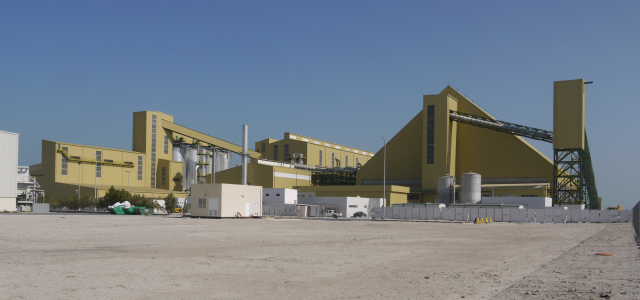SKIL in Refining
"Refining" could be looked upon as the preparation of any grade of sugar fit for human consumption. This, however, would be to use the word in its broadest sense and would encompass technologies discussed elsewhere. For instance, the low natural colour in beet juice makes it possible to produce an acceptable refined sugar in one operation. Similarly it is possible to produce a food grade low colour sugar, sometimes called 'blanco directo' or 'plantation white', in a cane sugar mill.
These notes deal with the production of low colour white sugars from cane, either in a "white end" processing some or all of the production from a co-located cane sugar factory or in an autonomous refinery.
There has been a clear trend in recent years towards the production of lower colour sugars at cane factories. In part this is a response to the market but it is also the result of recognising the lower production costs of doing so. The problems arising from this trend are associated with handling the product sugar economically.

ASC Refinery, Bahrain
RAW SUGAR DELIVERY
Raw sugar is usually delivered to an autonomous refinery by sea and, in a modern plant, is unloaded to store by dedicated facilities.
The particular nature of raw sugar is often not well understood by unloader manufacturers or store designers but SKIL engineers have experience of the design, maintenance and operation of such facilities. These include the 9,000 tpd offloading, 100,000 ton storage system for the Jeddah refinery and, more recently, the similar system in Bahrain.
PROCESSING
There are six discrete stages of the refining process with various options available at each stage :
Affination removes the adhering low grade syrup from the raw sugar before the crystals are melted. As such it is a very important refining step. Historically, all refineries employed affination but with the modern trend to VHP sugars some are now built without affination. Doing so reduces the raw sugar origins available to the refinery but reduces the capital and operating costs.
Clarification removes turbidity from the raw liquor. Carbonatation and phosphatation followed by filtration are both used for this duty but each has its pros and cons which need to be carefully assessed. In general, refineries serving sophisticated markets operate carbonatation whilst those serving less sophisticated ones are able to use the less capital-intensive phosphatation.
Decolourisation improves the colour of the liquor and utilises either activated carbon or ion exchange. Again there are pros and cons to each method that have to be considered. The major issue with ion exchange was the treatment and disposal of the brine effluent but modern trends in brine recovery and disposal are changing that perception.
Crystallisation is used to recover the product sugar and, as with raw sugar production, the selection of the best boiling scheme - possibly including modern continuous pans - is important. Crystallisation is an important refining step in its own right.
Curing and Drying is similar to the raw sugar process except that care is required to ensure that the sugar conforms to market requirements in terms of hygiene, particle size and shape and similar parameters.
Recovery separates recoverable sugar from the low grade syrup. It is critical to the economics of the refinery as any sugar remaining in the final molasses is sold for considerably less than product sugar. For a white end this can be accomplished within the raw house.
SKIL has all the resources needed to provide operational assistance to existing refineries or to create a new refinery. The work undertaken at the Singapore refinery would be typical of the former and the ultra-modern one now being built in Jeddah would be an example of the latter.
Converting a raw factory by adding a white end requires special considerations which encompass the energy balance in addition to the process aspects. SKIL understands these requirements and has computer models to help in this.
PACKAGING
The packaging of the many products of a typical refinery is a subject in its own right with sizes ranging from 8 gm catering envelopes to 25 ton bulk road/rail tankers and physical characteristics ranging from icing sugar through cubes to liquid sugars and syrups. Good refinery management dictates a full knowledge of the market requirements and SKIL can frequently help with introducing modern packaging techniques.

